Breaking Down Daniel Hudson’s Triumphant Return
As ridiculous as it might be to put a single 13-pitch relief outing under the microscope, I can’t contain my excitement about seeing Daniel Hudson on the mound again. Let’s look at his old repertoire for background, and gush over some GIFs from last night.
You wouldn’t think it of a pitcher who can hit 95 mph on the radar gun, but Daniel Hudson is a bit of a tinkerer. When he broke into the majors and through the end of the 2010 season, Hudson was a four-seam/changeup/slider guy, and he also (strangely) threw 17 curveballs over that span. He hasn’t thrown a major league curve since then, but in 2011, he did roll out a fourth pitch: a sinker. The sinker stayed in his repertoire for his mediocre half-season in 2012, but he added a cutter as a fifth pitch. Hudson’s repertoire in percentages:
In 2012, Hudson threw each of five pitches at least 8% of the time. As he broadened his repertoire, he threw his four-seam less and less; where once he used to throw it more than 60% of the time, in 2012 it was just 44% of his pitches thrown. The sinker became an emphasized pitch in 2010, and while his slider usage dipped a bit in 2012, it seemed to just lose a bit of Hudson “market share” due to the addition of the sinker and cutter, just like the four-seam.
Only one line on that graph stayed very consistent. In each season that he’s pitched, Hudson has thrown the changeup between 19.5% and 22.7% of the time. In no month did Hudson throw it less than 16.6% of the time, or more than 25.6% of the time. And while the change did not grade particularly well in 2012, it’s been a solidly above average pitch for him in his career due to a monstrously effective season in 2010. “Pitch Values,” as reported at FanGraphs, show the value of a pitch in the language of runs. A -1.1 wCT means that Hudson’s cutter was worth one run below the average cutter in 2012. Because of differences in pitch frequency, let’s stick with the version of “Pitch Values” that generates a value per 100 pitches thrown (“/C”).
Nothing has consistently blown hitters’ socks off. “Pitch Values” doesn’t distinguish between four-seam fastballs and sinkers, so both are lumped into the first column (wFB/C). The other four columns are slider, cutter, curve, and changeup.
In 2012, neither the fastballs nor the cutter did too much to help Hudson; in fact, both of those marks are quite bad (for reference, although Chase Anderson has had one of the very best changeups in the majors this season, its pitch value is just 2.78). Hudson’s cutter was never good, then, and his other fairly recent innovation — his sinker — actually accounts for most of the damage done to his fastball Pitch Value. A different but similar metric based more directly on PITCHf/x graded Hudson’s sinker as a horrific -8.69 runs per hundred.
Basically, it wouldn’t be terrible if Hudson never threw a sinker or cutter ever again, although as we know, pitch values aren’t independent of each other. Maybe both pitches made the four-seam more effective (although it doesn’t look like that). Maybe they kept batters off of the slider or change. The increased sinker usage and introduction of the cutter coincide with Hudson’s worst stretch in the majors, but maybe it was injury or pre-injury to blame for Hudson’s poor results.
It’s hard to tell from the GIF, but Hudson bounced his first pitch off of the plate. Montero snared it easily, even though there was no runner, but… it was 94 mph! Considering we’d been hearing 93 from his minor league appearances, this was a good sign. But then it was time for Hudson to bear down.
Oh! A 95 mph heater! At Brooks Baseball, it looks like this pitch was exactly 95 mph in terms of release speed. After he watched the first pitch hit the plate, you can hardly blame Abraham Almonte for wanting to watch what Hudson did with the second pitch. But Hudson was not going to beat himself if he could help it (that was the theme of the night), and he nailed the middle of the outer half of the plate.
At this point, Jeff Wiser and I were positively frothing with glee in text messages and on Twitter. See, Hudson is a pretty hard thrower, but his four-seam has averaged 94 mph almost exactly. We didn’t know it then, but Hudson ended up with an average four-seam velocity of 95.27 mph (topping out at 95.96). It’s not like this says Hudson will be able to throw a touch harder moving forward, or that he was able to let loose a bit more out of the bullpen. But it does say that that part of his game is almost definitely back. As with many pitchers returning from Tommy John, step 1 is getting the pitches back, and step 2 is getting command back. In the instance of his second pitch, it looked like he pretty much hit Montero’s glove where it was set up — maybe a bit high.
Hudson didn’t miss with the third pitch, either. When Huddy broke out the changeup to get ahead 1-2 in the count, Almonte had no idea what to do with it. Watch him try to get out of the way of the pitch before it… settles in right in the middle of the plate. From that text conversation with Jeff:
Yep. By Pitch Value, Hudson’s changeup was at its best (Anderson-esque, even) in 2010, when it was worth 3.24 runs above average per 100. Through the wonder of PITCHf/x, I’m also able to tell you that in 2010, there was a much bigger average difference in vertical movement between his change and his four-seam (4.72 inches) than there was in 2011 (3.29 inches) and 2012 (2.08 inches). These narrowing differences correspond with a decrease in the changeup’s success.
Small sample caveats apply, but last night, the difference between the average vertical movement of Hudson’s four-seam and his changeup was 4.54 inches. Another thing to watch, if you’re taking notes.
Hudson’s fourth pitch was an effortless four-seam fastball that missed down and away (but which was again 95 mph on the gun). After Almonte had leaned back for the change, it made sense to see if he’d reach for the fastball. On the fifth and final pitch, the natural movement on Hudson’s four-seam fastball did the heavy lifting:
After missing this same location on Pitch 4 by about six inches, Hudson nailed Montero’s glove with this pitch. Or, he would have, if Almonte hadn’t have reached out (exactly what the battery had tried to get him to do a moment before) and swung over the fastball (which, by the way, was again 95 mph). Didi Gregorius scooped up the grounder for the easy play, and then as Jeff texted me, Dan Hudson had a 0.00 ERA on the season.
And the ERA is still 0.00. With Yangervis Solarte at the plate, Hudson unleashed another gorgeous changeup:
I’m not going to put in a GIF for every one of Hudson’s pitches, but this second changeup of the night deserved one not just because the pitch itself was beautiful, but because even though the pitch dropped in on the away portion of the plate (rather than the middle), Solarte flinched (just like Almonte did). Wow. Just wow.
On the night, Hudson threw 8 four-seam fastballs, 3 changeups and one each, sinker and slider. At this point in the game (a mere 6 pitches in), Hudson had only thrown his four-seam and change. But that was about to slider. I mean change, with a slider.
Solarte didn’t have a chance. The angle of the center field camera at PetCo is a little misleading — note how right before the pitch gets into Miggy’s glove, it seems to be moving straight ahead, even though the path from Hudson’s hand to the plate is not straight on in this view.
As we saw above, if the past is any guide, Hudson is likely to throw his slider around 15%-20% of the time. What makes it so important to his success is that radical change in movement. We don’t know yet whether Hudson’s cutter is shelved for good or not, but if it is, the slider becomes all the more important as his only pitch that moves to his glove side. From Brooks Baseball, a chart of the horizontal movement on Hudson’s pitches last night:
The numbers in the table also tell this story, but note how the red dot in the chart is the only plot point north of zero — and the other pitches were all buried to Hudson’s arm side. Solarte had just been taught by the changeup that he was way off in gauging how close Hudson was pitching him. What an excellent sequence there.
By this point, it was pretty apparent that Hudson was working quickly. So far this season, Diamondbacks pitchers have been among the fastest workers in the game; PITCHf/x clocks the average time between pitches for D-backs pitchers at 21.8 seconds, which is second-fastest in the majors. Although he labored a bit with a 21.7 second “Pace” in 2012, Hudson has always been a particularly fast worker: for his career, he’s had 19.6 seconds between pitches, with last night’s pace even quicker (19.2). Just another day at the office.
With the count 0-2 against Solarte, Hudson followed up with another 95 mph four-seam high in the strike zone (although not as high as Montero would have liked), and when Solarte hit the ball weakly to left field, the ball caught Alfredo Marte (not the other way around).
Harry Pavlidis (a/k/a Pitch Info) manually tags pitches for Brooks Baseball when they’re borderline according to the PITCHf/x data, and the pitch that was tagged a sinker was the first one to Alexi Amarista. It might look like Hudson’s first pitch of the night, the one that hit the plate, but actually, this one had 5 inches less vertical movement (meaning it did sink, as compared to the fastball) and an extra inch of horizontal break. You be the judge.
Hudson next jammed Amarista with a four-seamer (again 95 mph) up at the hands, evening the count at 1-1. Then he went back upstairs with his 8th four-seamer of the night (strike foul) and down and in (ball two).
For his final trick, Hudson his third changeup, which resulted in something of a cue shot to Aaron Hill for the final out of the inning:
OK, so it wasn’t quite off the tip of the bat, but it was pretty close. Remember how both Almonte and Solarte both bailed on the changeups they were thrown, despite them being middle or away? Look where Amarista’s front shoulder is by the time his swing path goes through the plate. I think it was probably a combination of movement and (at least in this case) setting it up with his four-seam fastball inside or off the plate, but each of the three batters who faced Hudson were all wrong when it came time to do something with a changeup — and all three were strikes. See what I mean about Amarista with this still:
It was all Amarista could do to drag the head of the bat slowly enough to not be ahead of the changeup, but the result was still a weak ground ball.
So to review: Hudson’s four-seam fastball looked excellent last night, with HUGE vertical movement, unusual (in general, not for him) horizontal movement, and gaudy numbers on the radar gun. Hudson’s changeup was executed amazingly well, looking like a plus or plus plus pitch so far. The slider looks like a real and important weapon, especially if the horizontal movement on Hudson’s four-seam and change actually stick. And it remains to be seen whether Huddy will throw a cutter ever again, or whether he can succeed with a sinker.
All in all, though, it was an exhilarating night to follow the D-backs. Hudson’s appearances will continue to be must-see TV through the end of the season.
*I read this idiom once in a (poorly?) translated version of All Quiet on the Western Front by Erich Maria Remarque. I assume it means something to someone…
8 Responses to Breaking Down Daniel Hudson’s Triumphant Return
Leave a Reply Cancel reply
Recent Posts
@ryanpmorrison
 Congrats to @OutfieldGrass24 on a beautiful life, wedding and wife. He deserves all of it (they both do). And I cou… https://t.co/JzJtQ7TgdJ, Jul 23
Congrats to @OutfieldGrass24 on a beautiful life, wedding and wife. He deserves all of it (they both do). And I cou… https://t.co/JzJtQ7TgdJ, Jul 23 Best part of Peralta’s 108 mph fliner over the fence, IMHO: that he got that much leverage despite scooping it out… https://t.co/ivBrl76adF, Apr 08
Best part of Peralta’s 108 mph fliner over the fence, IMHO: that he got that much leverage despite scooping it out… https://t.co/ivBrl76adF, Apr 08 RT @OutfieldGrass24: If you're bored of watching Patrick Corbin get dudes out, you can check out my latest for @TheAthleticAZ. https://t.co/k1DymgY7zO, Apr 04
RT @OutfieldGrass24: If you're bored of watching Patrick Corbin get dudes out, you can check out my latest for @TheAthleticAZ. https://t.co/k1DymgY7zO, Apr 04 Of course, they may have overtaken the league lead for outs on the bases just now, also...
But in 2017, Arizona ha… https://t.co/38MBrr2D4b, Apr 04
Of course, they may have overtaken the league lead for outs on the bases just now, also...
But in 2017, Arizona ha… https://t.co/38MBrr2D4b, Apr 04 Prior to the games today, there had only been 5 steals of 3rd this season (and no CS) in the National League. The… https://t.co/gVVL84vPQ5, Apr 04
Prior to the games today, there had only been 5 steals of 3rd this season (and no CS) in the National League. The… https://t.co/gVVL84vPQ5, Apr 04
Powered by: Web Designers@outfieldgrass24
 RT @ZHBuchanan: If you haven't filled out our Diamondbacks fan survey yet, there's still time. We want to hear from you!
https://t.co/ctzkNTbk5s, Jan 13
RT @ZHBuchanan: If you haven't filled out our Diamondbacks fan survey yet, there's still time. We want to hear from you!
https://t.co/ctzkNTbk5s, Jan 13 “Top US News: Tesla merch now available for purchase with Dogecoin”
The point at which I wish to formally withdraw… https://t.co/7k38A7nDCQ, Jan 14
“Top US News: Tesla merch now available for purchase with Dogecoin”
The point at which I wish to formally withdraw… https://t.co/7k38A7nDCQ, Jan 14 Ya boi with the feature image https://t.co/g3SMJYmAQq, Jan 14
Ya boi with the feature image https://t.co/g3SMJYmAQq, Jan 14 Nelson fell asleep waiting for Simcoe to get home from the groomer. I’m jealous, honestly. https://t.co/CO4FZtwhUJ, Jan 13
Nelson fell asleep waiting for Simcoe to get home from the groomer. I’m jealous, honestly. https://t.co/CO4FZtwhUJ, Jan 13 RT @OutfieldGrass24: Dynasty question: Daniel Espino, Emerson Hancock, and Quinn Priester. Gotta cut one. Who should it be?, Jan 13
RT @OutfieldGrass24: Dynasty question: Daniel Espino, Emerson Hancock, and Quinn Priester. Gotta cut one. Who should it be?, Jan 13
Powered by: Web Designers



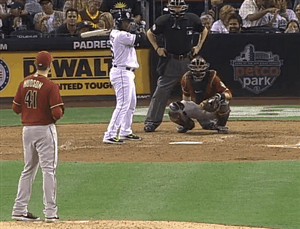
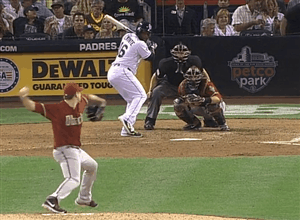
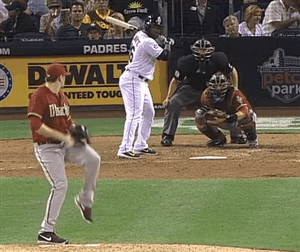

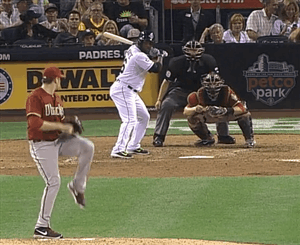

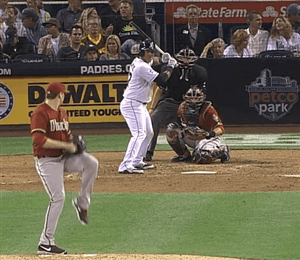
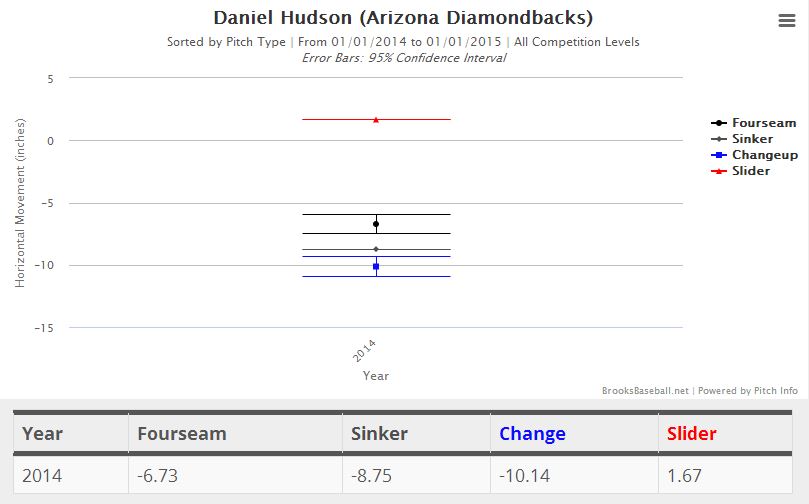
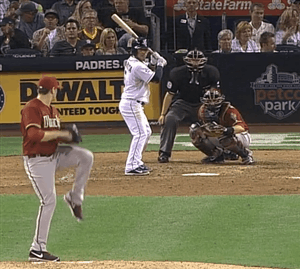
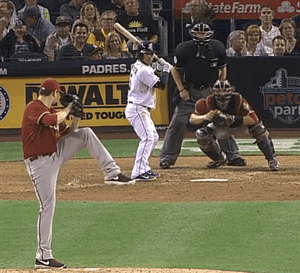





The most exciting part was seeing some excellent raw stuff, even if it was only one inning and a small sample size. Pre-injury, did he profile as a #1 or #2 starter? It seems like with pitches like the fastball/change-up (plus/plus-plus?), he would have profiled close to an ace.
It would be a shame if he can’t get back in the rotation because of the injury. We have so few guys with that kind of talent/potential. He would fit in well with that radical pitching change you or Jeff mentioned earlier this year – 9 pitchers each taking 3 innings, was it?
Yeah, he would be fantastic in that role. Completely agree. In fact, in a recent simulation of an expansion draft I adopted the starter-by-committee thing — and drafted Daniel Hudson for that exact purpose!
Great information. It was truly a wonderful return for Daniel Hudson. He deserves everything possible for the two year fight to come back. He is probably the finest person any team in baseball could have. He cheered the team on for all the time he was unable to play, rather than stay home and feel sorry for himself.
He is second only to Justin Verlander as the finest pitcher in the history of Old Dominion college. His education, talent, heart, and work ethetic make him a treasure for a troubled DBack team.
I’m glad someone else enjoyed that game as much as me! I almost teared up it was so exciting to see Hudson back. I hope like heck he is around for a long time but even if not Wednesday night was great. That’s not even mentioning Owings and then Pollock the night before. Little ray of sun finally breaks through in a dark dark year.
[…] covered Hudson’s debut last week, but I wanted to harp on it a bit more. Daniel Hudson threw his first major league pitch since Jun […]
[…] primed for a big return. Instead, he’ll be out until at least late-May. Daniel Hudson made a triumphant return, but he would have been useful to have had available sooner than the end of the season, as turned […]
[…] Hudson’s return was like last September, or if you just want to relive it, head on back to this piece — I just couldn’t really keep myself from gushing, and there are GIFs of most of the […]
[…] saw a kernel of this last year. In a GIF-heavy breakdown of Hudson’s first appearance after his Tommy Johns, he was all over the zone — not that […]